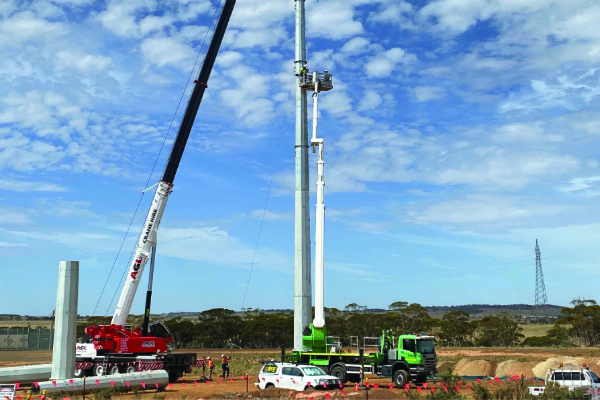15 February 2022
 The installation of the first transmission poles for the $2.4 billion SA-NSW Interconnector marks the beginning of major construction work for Project EnergyConnect and the transformation of South Australia into a renewable energy export superpower.
The installation of the first transmission poles for the $2.4 billion SA-NSW Interconnector marks the beginning of major construction work for Project EnergyConnect and the transformation of South Australia into a renewable energy export superpower.
Project EnergyConnect will drive billions of dollars of investment in renewable energy in South Australia, create thousands of new jobs and further lower the price of electricity for households and businesses across the state.
Project EnergyConnect is an example of the type of major economic investment South Australia needs if it is to continue to lead the nation for economic growth and continue to grow job opportunities now and into the future.
Project EnergyConnect will be a freeway for renewable energy produced in South Australia and exported to New South Wales, reducing electricity prices and fuelling economic growth in both states. Importantly, it will strengthen the power grid, so South Australia can securely add more renewable energy in line with the state’s push for net zero emissions by 2050.
It will take 600,000 working hours to raise around 380 towers weighing 10,000 tonnes along the 206 km route to the NSW border. These will be set in 15,000 cubic meters of concrete reinforced with 1,500 tonnes of steel. The towers will carry 2,500 kilometres of wire conductor – almost the distance from Adelaide to Darwin.
The beginning of Project EnergyConnect marks the beginning of a renewable energy jobs boom in the mid-north that will deliver South Australia’s target of net-100% renewables by 2030.
At 900 kilometres in length the $2.4 billion Project EnergyConnect will be the longest high voltage transmission line built in Australia and deliver a renewable energy jobs boom along its route, adding to Neoen’s Goyder South project, near Burra which commenced last month.
Independent modelling shows EnergyConnect delivering another $100 of savings for the average family.
Energy intensive small businesses in South Australia are also modelled to achieve greater savings on their power bills driving investment, economic growth and job creation.


